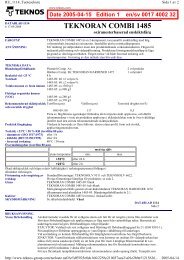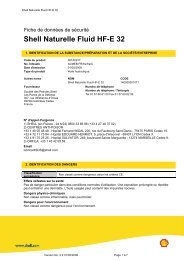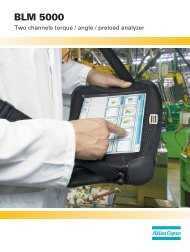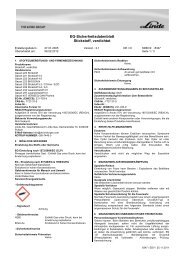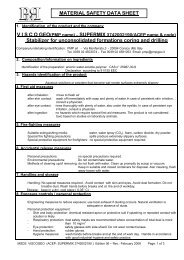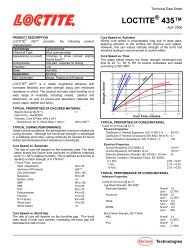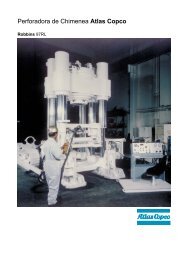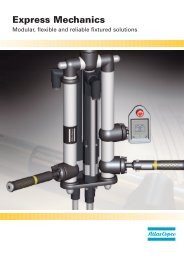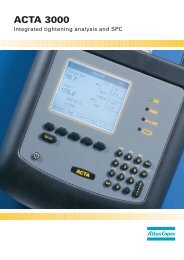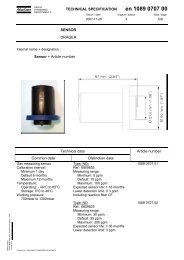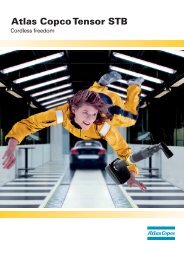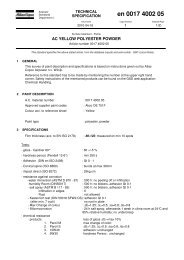Ergonomics - Atlas Copco
Ergonomics - Atlas Copco
Ergonomics - Atlas Copco
Create successful ePaper yourself
Turn your PDF publications into a flip-book with our unique Google optimized e-Paper software.
98<br />
the dynamic properties of the machine and<br />
the hand-arm system, the response will ac-<br />
tually be amplified for a certain duration or<br />
shock impulse. This is a shock and response<br />
situation that we should try to avoid.<br />
How can we influence the<br />
duration of the shock?<br />
If we take an angle nutrunner as an example,<br />
the length of the shock depends on the<br />
joint hardness, the speed of the machine,<br />
the power of the motor and the method used<br />
to shut off the machine when the tightening<br />
cycle is complete.<br />
The joint<br />
A joint can be hard, soft, or anything in between.<br />
Joints reaching their final torque after<br />
a tightening angle of less than 60º are considered<br />
to be hard, and joints reaching their final<br />
torque after 700º are soft. A very hard joint is,<br />
for example, a thin plate fixed to another component<br />
with a bolt. The elongation of the bolt is<br />
very short. A typical soft joint is a hose clamp.<br />
As mentioned above, the shorter the shock,<br />
as in a hard joint, the smaller the shock reaction.<br />
But why do we still use so many mediumsoft<br />
joints? The answer is that the joint designer<br />
wants to have a reliable joint which retains<br />
its clamping force after many load changes<br />
– the softer the better from this point of view.<br />
Machine speed<br />
The speed of the outlet spindle depends on the<br />
torque and speed of the motor. The joint may<br />
be sensitive to high speed for temperature<br />
reasons. Another parameter which limits the<br />
speed is the possibility of over-shoot when<br />
final torque is reached. This is a quality issue<br />
and it is limited by the speed of the clutch<br />
or the capability of the system to control the<br />
tightening in the case of an electric tool.<br />
Motor power<br />
The power of the motor also influences the<br />
tightening characteristics of the tool. A<br />
powerful motor will maintain the speed at<br />
the end of the tightening sequence, keeping<br />
total tightening time to a minimum. How-<br />
ever, if you increase the power of the motor,<br />
the tool gets heavier.<br />
Shut-off method<br />
The faster the shut-off, the shorter the dur-<br />
ation of the shock.<br />
Summary<br />
All these factors influence the duration of<br />
the shock and its reaction on the machine.<br />
If a tightening sequence is analysed taking<br />
torque as a function of time, we find that as<br />
the area under the curve becomes smaller,<br />
the impulse is smaller and the torque re-<br />
action is reduced.



